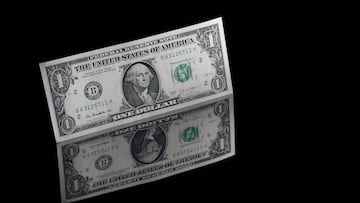Can the First Republic Bank collapse affect you if you don’t have an account?
The FDIC is reportedly set to place troubled First Republic Bank under receivership. There is concern that this development could worsen the banking crisis.

It’s been a rough couple of months for the banking industry, starting with the largest bank failure since the 2008 crisis taking place in March with the collapse of Silicon Valley Bank and Signature Bank.
Now, the FDIC is reported to be preparing to place First Republic Bank under receivership. The Bank’s stock plunged after it revealed that they had lost $100 billion in deposits in the first quarter of the year.
According to Reuters, the FDIC decided that there was no more time to look for ways for the private sector to rescue the regional bank; thus, the move to put it in receivership.
What is receivership in banking?
Receivership is a legal process by which a receiver or trustee is appointed by a court or regulatory authority- in this case, the FDIC- to take control of a bank that is considered to be in financial distress. It may take place when a bank becomes insolvent or unable to meet its financial obligations. In such cases, the FDIC may choose to close the bank and appoint a receiver to manage its affairs.
The receiver is responsible for managing the assets and liabilities of the company and is meant to protect the interests of depositors and other creditors, and to minimize any losses to them while the bank is being managed or liquidated. The receiver may sell off the bank’s assets to pay off its debts or attempt to rehabilitate the bank and return it to profitability.
During receivership, the bank may continue to operate, but the receiver has the power to make all financial decisions and may take steps to reduce costs, sell off assets, or restructure the bank’s operations.
How the collapse of SVB and Signature bank affected First Republic
The failure of Silicon Valley Bank and Signature Bank sparked a run on deposits at regional banks including First Republic. Ratings bodies downgraded First Republic’s ratings because they had a high percentage of uninsured interests, and because they lent out more money than they had in deposits. Many of the lender’s other clients then moved their money to larger financial institutions from smaller lenders. Just how safe are depositors’ savings at banks right now?
You may also be interested in: What to expect if your bank collapses
Can the First Republic collapse affect you if you don’t have an account?
If you have less than $250,000 in a federally-insured bank account, like the majority of Americans, your money should be safe. That is the limit that the Federal Deposit Insurance Corporation (FDIC) covers per depositor, per ownership category, per FDIC bank.
So if you have accounts in more than one ownership category you may be eligible for more than the current minimum of $250,000 in protection at a single FDIC-insured bank. Should you have money at another FDIC-insured bank, you would also be eligible for the minimum coverage for that institution too, even if you already had to file a previous claim at a different failed bank.
Containing the contagion
There are fears that the failure of a third financial institution is a sign that there is even more trouble brewing in the banking sector. Securities expert David Chiaverini told CNN that although dire, First Republic’s situation is unique, as it lends itself to liquidity problems. The lender had around 65% in uninsured deposits, and had a high 111% loan-and-long-term investment-to-deposits ratio, which means they had much less money in deposits than in loans and investments.





